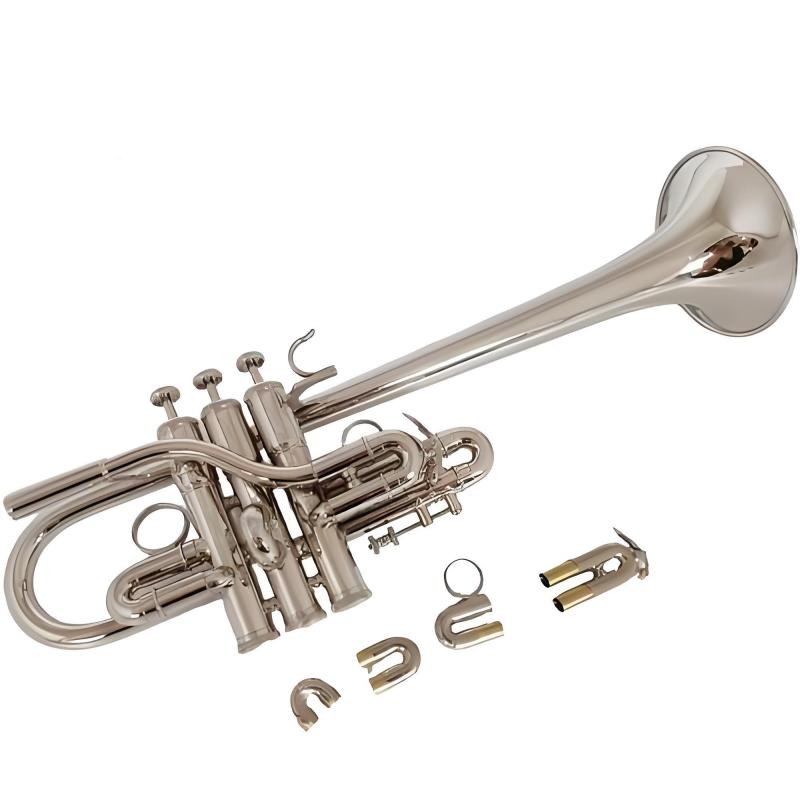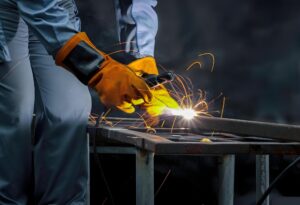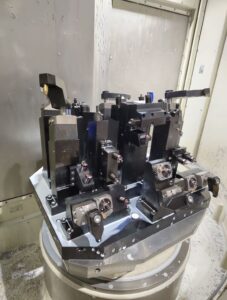Nickel silver—also known as German silver—is a copper-based alloy prized for its unique blend of durability, corrosion resistance, and silvery luster. Widely used in manufacturing, machining, and decorative industries, this versatile material offers a cost-effective alternative to precious metals while delivering reliable performance. In this guide, we’ll dive into its composition, properties, grades, and real-world uses, helping you determine if it’s the right material for your project.
What Is Nickel Silver?
Nickel silver is a copper-nickel-zinc alloy that, despite its name, contains no actual silver. The “silver” in its name refers to its bright, metallic sheen, which closely resembles sterling silver. This alloy’s primary components—copper, nickel, and zinc—work together to balance strength, workability, and corrosion resistance, making it a go-to material for applications ranging from musical instruments to industrial hardware.
Unlike pure metals, nickel silver’s versatility stems from its customizable composition: adjusting the ratios of copper, nickel, and zinc (or adding trace elements like lead) allows manufacturers to tailor its properties for specific needs, such as enhanced machinability or higher hardness.
Chemical Composition of Nickel Silver
The composition of nickel silver varies by grade but follows a consistent core formula. Here’s a breakdown of its key elements:
- Copper (Cu): 60–70% The base metal, providing malleability, thermal conductivity, and a foundation for the alloy’s structure.
- Nickel (Ni): 10–30% Adds strength, corrosion resistance, and the alloy’s signature silvery color. Higher nickel content boosts durability but increases cost.
- Zinc (Zn): 20–30% Enhances hardness and workability while reducing brittleness. Balances the alloy’s mechanical properties.
- Trace elements (optional):
- Lead (Pb): Added in small amounts (1–3%) to improve machinability, making it easier to cut or shape.
- Iron (Fe) or manganese (Mn): Occasionally included to refine grain structure and enhance strength.
The precise ratio of these elements determines the alloy’s specific characteristics—for example, higher nickel content improves corrosion resistance, while more zinc boosts hardness.
Properties of Nickel Silver
Nickel silver’s popularity stems from its unique combination of physical and mechanical properties, making it suitable for both functional and decorative applications.
Physical Properties
- Appearance: A bright, silvery-white finish that mimics precious metals like sterling silver, making it ideal for decorative uses.
- Density: 8.5–8.7 g/cm³ (heavier than aluminum but lighter than pure copper), offering a solid, substantial feel.
- Thermal Conductivity: Moderate (≈25–45 W/m·K), allowing efficient heat transfer in applications like heat sinks or cookware components.
- Electrical Conductivity: Low to moderate (≈10–20% of pure copper), limiting its use in high-conductivity electrical applications.
- Corrosion Resistance: Excellent resistance to oxidation, moisture, and saltwater, making it durable in outdoor or marine environments.
Mechanical Properties
- Tensile Strength: 300–600 MPa (varies by grade), providing enough strength to withstand mechanical stress in components like gears or fasteners.
- Hardness: 60–150 HB (Brinell Hardness), balancing scratch resistance with workability—hard enough to resist wear but soft enough to shape.
- Ductility: High, allowing it to be bent, stamped, or drawn into intricate shapes (e.g., jewelry settings or instrument parts).
- Workability: Machinable with standard tools, though some grades (especially lead-free ones) may require lubrication to prevent work hardening.
- Fatigue Resistance: Good tolerance for repeated stress, making it reliable in moving parts like hinges or bearings.
Common Nickel Silver Grades
Nickel silver is available in several grades, each formulated for specific applications. Here are the most widely used:
| Grade | Composition (Cu/Ni/Zn) | Key Properties | Typical Uses |
| Nickel Silver 18/8 | ~74% Cu / 18% Ni / 8% Zn | Balances strength, luster, and workability | Jewelry, musical instrument parts, decorative hardware |
| Nickel Silver 60/40 | 60% Cu / ~5% Ni / 35% Zn | High zinc content for hardness | Industrial gears, bushings, and fasteners |
| Nickel Silver 65/35 | 65% Cu / ~10% Ni / 25% Zn | Enhanced corrosion resistance | Marine hardware, outdoor fixtures |
| Lead-Free Nickel Silver | Cu/Ni/Zn (no lead) | Eco-friendly, suitable for food-contact | Cutlery, cookware components |
| High-Nickel Grade | ~50% Cu / 30% Ni / 20% Zn | Maximum strength and corrosion resistance | Aerospace or marine components |
What Is Nickel Silver Used For?

Nickel silver’s unique blend of properties makes it indispensable across industries. Here are its most common applications:
- Musical Instruments: Trumpets, saxophones, and trombones use nickel silver for valves, slides, and mouthpieces—its corrosion resistance ensures longevity, and its smooth surface enhances sound quality.
- Jewelry & Accessories: Costume jewelry, belt buckles, and watch cases rely on its silvery luster to mimic sterling silver at a lower cost. It’s also used for engraved nameplates or decorative findings.
- Cutlery & Serveware: High-quality flatware and serving utensils use nickel silver for its rust resistance and ability to hold a polished finish, even with frequent use.
- Hardware & Fasteners: Door handles, locks, and marine hardware (e.g., boat cleats) benefit from its durability and resistance to saltwater corrosion.
- Electrical Components: While not ideal for wiring, it’s used in switches, connectors, and terminal blocks where moderate conductivity and strength are needed.
- Machined Parts: Gears, bearings, and bushings in industrial machinery use nickel silver for its wear resistance and machinability.
Advantages and Disadvantages of Nickel Silver
Advantages
- Aesthetic Versatility: Its silvery finish eliminates the need for plating (unlike brass), reducing production costs.
- Corrosion Resistance: Outperforms brass in humid or salty environments, extending component lifespan.
- Workability: Easily shaped via stamping, casting, or machining, even for intricate designs.
- Cost-Effective: Offers a silver-like appearance without the expense of precious metals like sterling silver.
- Durability: Withstands daily wear, making it suitable for high-use items like tools or utensils.
Disadvantages
- Lower Conductivity: Not suitable for high-performance electrical applications (use copper or silver instead).
- Work Hardening: Can become brittle during repeated machining, requiring annealing (heat treatment) to restore ductility.
- Nickel Sensitivity: Some people may react to nickel, limiting its use in direct skin-contact items (e.g., certain jewelry).
- Cost vs. Brass: More expensive than brass due to nickel content, though still cheaper than silver.
Nickel Silver in Modern Manufacturing
Nickel silver is a versatile alloy that bridges the gap between functionality and aesthetics. Its unique combination of corrosion resistance, workability, and silvery luster makes it a top choice for industries ranging from music to manufacturing. Whether you need durable hardware, decorative jewelry, or precision-machined parts, nickel silver offers a reliable, cost-effective solution.
At Precionn, we specialize in machining nickel silver and other high-performance alloys to meet your exact specifications. Our expertise in custom fabrication ensures your components—whether for musical instruments, industrial machinery, or decorative projects—are crafted with precision. Contact us today to discuss how nickel silver can elevate your next project.




